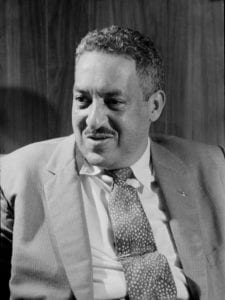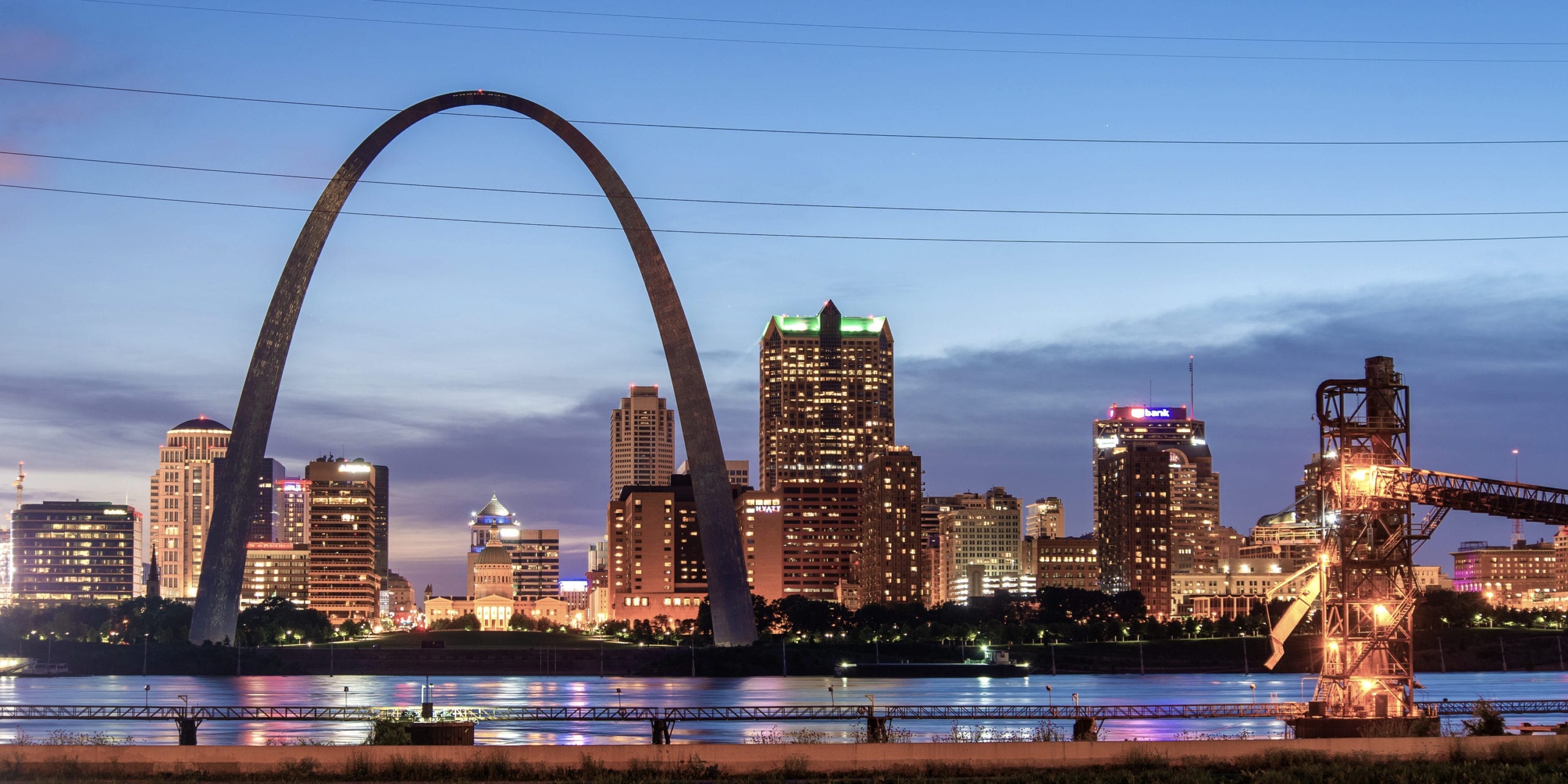
To celebrate Black History Month, we’ve studied freedom suits and the Dred Scott case at St. Louis’ Old Courthouse and examined diversity issues among small and mid-sized firms. Today, RDM attorney and Diversity, Equity, and Inclusion Committee chair Justin Ijei reflects on the life and achievements of Supreme Court Justice Thurgood Marshall, the first Black man to serve in the position.
Although Thurgood Marshall is well known as being the first Black Supreme Court Justice, Marshall was a stellar attorney whose work became a pillar for the civil rights movement. In fact, Marshall argued 32 cases in front of the Supreme Court, the most anyone has argued in history. Of those 32, his clients prevailed in 29.
Background and Education
Thurgood Marshall was born in Baltimore, Maryland in 1908. After graduating from high school, Marshall attended Lincoln University in Pennsylvania, America’s first degree-granting institute of higher education for Blacks. In 1930, Marshall attended Howard University Law School after being rejected from the University of Maryland School of Law because of the color of his skin. With a law degree in hand in 1933, Marshall opened his own law firm in Baltimore after graduating from law school.
Thurgood Marshall’s Landmark Civil Rights Cases

As an attorney, Marshall had an incredible career. Marshall’s legal career was dedicated to fighting for civil rights and justice. Shortly after beginning his career, Marshall developed a close relationship with the National Association for the Advancement of Colored People, first by representing the organization in court, and later becoming a staff member. In 1940, Marshall founded and became executive director of the NAACP’s Legal Defense and Education Fund, where he argued a number of landmark civil rights cases.
Murray v. Pearson
Marshall’s first case on behalf of the NAACP, Murray v. Pearson, brought him back to face the University of Maryland’s discriminatory policies. Just a few years after Marshall had sought admittance, Donald Murray applied to the university’s law school and was likewise rejected due to his race. A Maryland circuit court ruled that because Murray could not obtain a “separate but equal” education in Maryland, the university must admit him. The Maryland Court of Appeals affirmed the decision.
Chambers v. Florida
At just 32 years old, Marshall argued his first case before the U.S. Supreme Court—Chambers v. Florida. Marshall represented four Black men who were convicted and sentenced to death for murder after providing coerced confessions. The Supreme Court overturned the convictions. This would be the first of many Supreme Court victories for Thurgood Marshall.
Shelley v. Kraemer
In the 1948 Supreme Court case of Shelley v. Kraemer, Marshall represented plaintiffs who purchased houses but were denied the right to occupy them due to race-based restrictive covenants placed on the properties. The Supreme Court struck down the ability to enforce these restrictive covenants, granting new freedom to Black people to move into homes and neighborhoods previously off limits.
Brown v. Board of Education
Marshall’s most famous victory occurred in 1954 in Brown v. Board of Education of Topeka, the case which overturned so-called “separate but equal” segregation of schools. In Brown, Marshall served as the chief attorney for a group of Black parents whose children were required to attend segregated schools. Marshall challenged the old precedent of “separate-but-equal” doctrine that was accepted by the U.S. Supreme Court in 1896 in Plessy v. Ferguson.
In Brown, Marshall argued that schools for Black children were not in fact equal to the white schools, and segregation violated the equal protection clause of the 14th Amendment which holds that no state can “deny to any person within its jurisdiction the equal protection of the laws.” Marshall’s clients received a unanimous verdict from the Supreme Court that held “in the field of public education the doctrine of ‘separate but equal’ has no place.” Accordingly, the Court ruled that plaintiffs were “deprived of the equal production of the laws that is guaranteed by the 14th Amendment.” The decision was a key turning point for the civil rights movement.
Marshall’s Public Service Career
Marshall was nominated to the U.S. Court of Appeals for the Second Circuit in 1961 by President John F. Kennedy. His nomination was blocked for several months by a contingent of southern senators, but eventually Marshall was seated and served on the court until 1965. Marshall left the Second Circuit when President Lyndon B. Johnson appointed him U.S. Solicitor General, the first Black person to hold the position. At the time, it was the highest ranking federal office ever held by a Black person.
Supreme Court Justice Thurgood Marshall
In 1967, President Johnson nominated Marshall to the United States Supreme Court, stating that it was “the right thing to do, the right time to do it, and the right man and the right place.” During his tenure as justice, Marshall was known for being a passionate member of the Court who supported continued to push for the expansion of civil rights. He was also a staunch opponent of the death penalty. Marshall strongly believed that the Constitutions should be viewed as a living, evolving document. “You do what you think is right and let the law catch up.”
As a Supreme Court Justice, Marshall participated in more than 3,600 cases and dissented in one in four cases. By the end of his career as a Justice, Marshall was known as “the great dissenter.” Through his dissent, Marshall brought to light the injustices that plagued America and was a voice for the disenfranchised.
Marshall served on the U.S. Supreme Court until he retired in 1991. Justice Elena Kagan, nominated in 2010, clerked for Marshall in the 1980s and considered him a mentor. Clarence Thomas replaced Marshall on the bench, becoming just the second Black Supreme Court Justice. To this day, Marshall and Thomas are the only Black people to serve on the Supreme Court. Marshall passed away in 1993 at the age of 84.
The Legacy of Thurgood Marshall
As both an attorney and a Supreme Court Justice, Marshall was a voice for the voiceless. His relentless pursuit for racial equality and justice paved the way for the civil rights movement to take form. Marshall brought his personal experience of unfair and unjust treatment to his work, showing empathy for those downtrodden because of their race, gender, or economic status. Even though we have come far from where we were when the young attorney undertook his first civil rights case, we still must continue the legacy of Thurgood Marshall to break down the barriers of systemic and institutional racism and discrimination.
Photo of the Thurgood Marshall statue in Annapolis, MD Kevin Galens.


